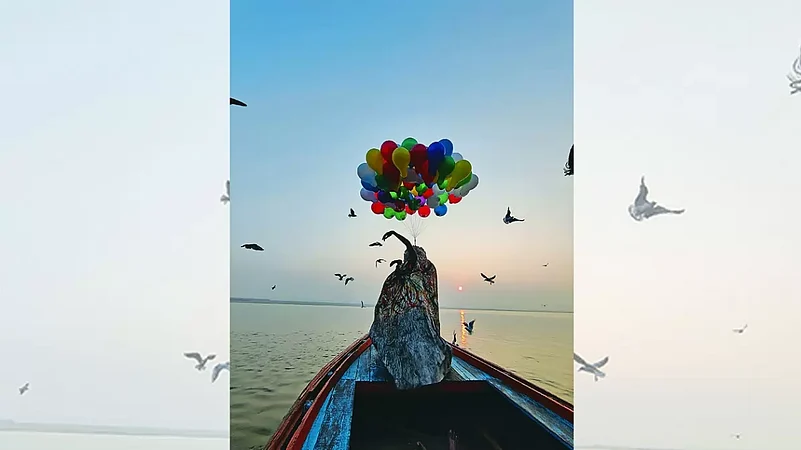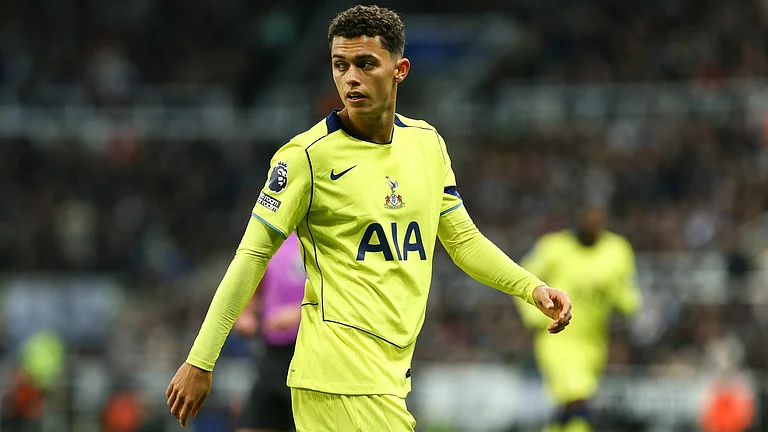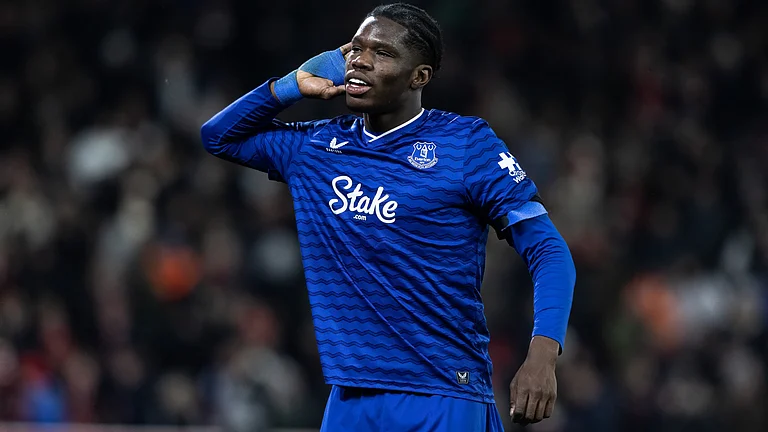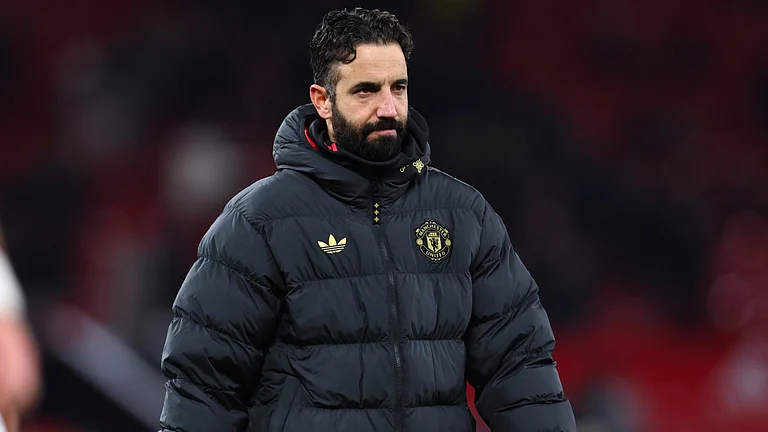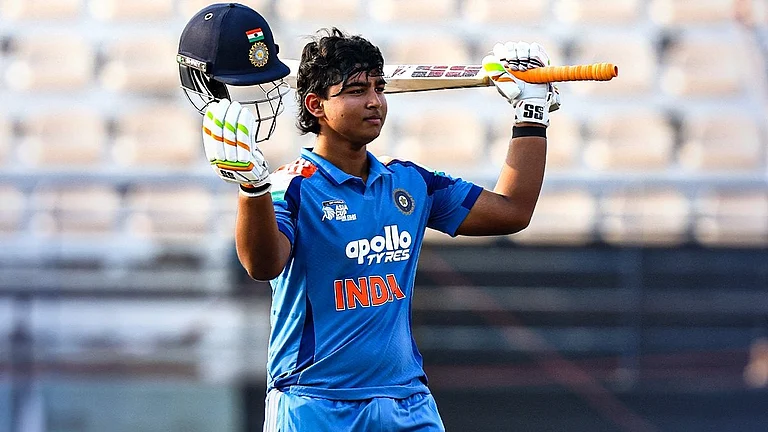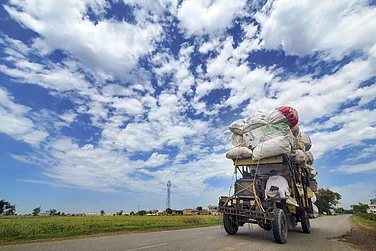Can marriage be consummated without sexual interaction? This question continues to bother Zainab (name changed on request) as she wipes the dust off Foucault’s History of Sexuality while cleaning her bookshelf. A scholar of gender history, she was unaware of her asexuality until she started finding out more about ‘relationships without sex’.
“I got into relationships with men but never felt sexually attracted to them. I thought it was due to my low sexual drive,” says Zainab, who is in her mid 30s. Some of her friends asked her to wait for the ‘right person’ who would ‘make her sexually active’. “But nothing worked and ultimately, I discovered myself. I am a heteroromantic asexual who may connect to men romantically, but not sexually,” she says.
Zainab is not the only one who struggled to discover her asexual identity. Reports of the Williams Institute, which conducts independent research on sexual orientation and gender identity law and public policy, suggest roughly one per cent of the world population is asexual—these people don’t get sexually attracted to others. However, it does not mean that asexual people cannot have sexual desires at all. There is a difference between sexual desire, libido and attraction.
In the words of Raj Saxena, the founder of the social media page Indian Asexuals—Indian Aces: “All asexual people are not sex repulsed. Some of them are sex-positive. Sex libido and sexual desire are totally different than sexual attraction. Some asexual persons might indulge in sex as they would like to act on their libido or sex drive. They might do some adjustments with their partners as their partners are also adjusting.”
So, asexuality is a spectrum comprising different forms of sexual behaviours—ranging from demisexual to greysexual. Extrapolating the nuances, Luke Brunning, a faculty of Applied Ethics at the Centre for Love, Sex and Relationships, University of Leeds, says: “Associated with asexuality are greysexuality and demisexuality. Greysexuals experience sexual attraction, but only rarely. Demisexuals experience attraction only when they have a stable emotional connection with someone.”
Together asexuality, greysexuality and demisexuality form a rough spectrum of experiences of sexual attraction. Many asexual people emphasise that they experience a range of other forms of attraction besides sexual attraction, Brunning adds.
Depending on their romantic orientations, asexual persons can identify themselves as homoromantic, heteroromantic, biromantic, queer-platonic or aromantic individuals. “Many asexual people are not aromantic. They have romantic relationships and have a romantic orientation to partners of different, the same, or both sexes,” the scholar notes. Notably, a 2014 survey by Asexuality Visibility and Education Network (AVEN) found that 25.9 per cent of asexual people are aromantic.
As the spectrum of asexuality is the least discussed matter in the discourse of LGBTQIA, asexual people spend most part of their lives in dilemma. And when they decide to come out after discovering their identities, they are bullied with suggestions—as Julie Sondra Decker recalls in her seminal work The Invisible Orientation: An Introduction to Asexuality—“Why is it such a big deal to try sex?... You have a disorder... You’re trying to be different. You just want attention...”. Meanwhile, the major problem in discovering one’s identity lies in the lack of knowledge or ignorance about asexuality.
‘A’Sexual Dilemma
Fifty-four-year-old Aradhana (name held back to avoid identification) got married in 1997 to a cis-het man but discovered her identity after more than a decade. “I grew up in an age when asexuality was not even discovered. When asexuality was recognised, it was perhaps 1999,” she says. However, people started to know about it during 2008-09 when the internet became accessible.
Since her teenage, though she romantically got engaged with men, sex was the last thing she desired. “I used to think why people would even want to do it?” she asks. After marriage, the situation became more difficult as sex is considered one of the foundational principles of a successful marriage. “I was totally repulsive to penetrative sex. I was taken to gynecologists, psychiatrists and what not. They gave me a cognitive behaviour exercise to mend me,” she adds.
It was in 2008, when her marriage was under severe strain that she Googled ‘sexless marriage’ and got directed to the page of AVEN. This was the first time she knew about asexuality and its spectrum. “When I told my husband, he said I was making it up,” Aradhana laments. However, in another few years, she came out to very close friends and family members. Still, she couldn’t come out in public. “I am a public figure and people hardly understand asexuality. They would immediately tag me as a homosexual. So, it is better to not reveal my identity,” says Aradhana, who currently identifies herself as aromantic asexual. “I started as a demi hetero-romantic asexual but with time, perhaps because of age, I lost the interest in romance as well,” she adds.
For Divya Chaturvedi, 28, the dilemma of sexuality was a constant companion. Since her teenage, she felt emotionally connected to women. “I tried to get romantically involved with heterosexual men. But it did not work out,” she says. Once, she got into a long-distance relationship with a cis-het man; but realising that she wouldn’t be able to give what a heterosexual relationship needs, she stepped back.
The family’s pressure to get married ultimately pushed her to discover her identity. “I was 24 when my family tried to get me married but I was quite sure that I wouldn’t be able to romantically involve with the person. Why ruin someone else’s life when I can’t give to what the concept of marriage is,” says Chaturvedi.
She met some activist friends and went through a counselling session where she was given a range of questions to explain her experiences. “After answering the questions, I realised that those were extremely relatable to me. They told me that I belong to the spectrum of asexuality,” she notes.
Through community platforms, she met her current partner who also identifies as an aromantic asexual. “It has been two years and we will be married soon. The best part of the relationship is that we understand each other very well.” As her partner wants a family, they would go for an IVF and later adopt a child. “Our marriage, in a way, also helps me to get rid of the family burden of getting married,” she adds.
Interestingly, when she tried to communicate her feelings and absence of sexual attraction to her sister-in-law, she mocked her and said, “the guy would make you learn things”.
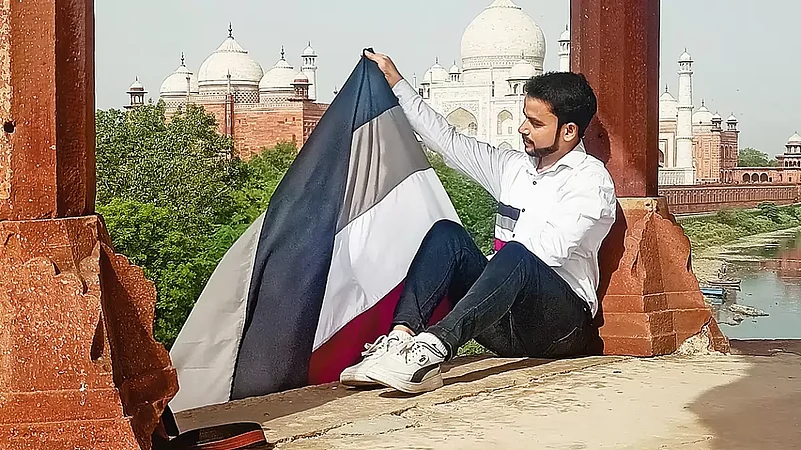
Fear of Losing Love
Zainab, however, was not so fortunate to find an asexual partner. She tried to participate in sexual activities in the ‘fear of losing him’. “But the efforts went in vain. I hardly have a sexual drive. So, it becomes really difficult and sometimes, I feel that I am ruining my husband’s life,” she says.
In her case, the intersectionality of religion and gender also played a huge role. “When I used to be in a live-in relationship with my partner, I thought I was unable to participate in sexual activity due to my religious prohibitions. In Islam, premarital sex is a sin. So, we got married thinking I would overcome my apprehensions. But I was wrong,” she says. Till now, it is only her husband and a very few close friends who know her identity. “It is very difficult to come out considering the layers of prohibitions among family and relatives,” she adds.
Finding Solidarities
Addressing such instances, asexual activist Saxena notes, “People think that they can have sex after marriage because of the belief system and due to the lack of awareness, they end up marrying heterosexual people.” To overcome such situations, he launched an application, known as the Ace App, for asexual people where they can get emotionally connected and find solidarity.
“Several people across the world are now using this app to find partners. We don’t charge anybody to attend our events, or to join the app. We know that there are several people who belong to underprivileged communities and are in need of support,” adds the 30-year-old activist, who identifies them as homo-romantic asexual.
Saxena’s story also traces back to days of the dilemma when people thought themselves to be homosexuals. “For the first few years, though I didn’t feel sexually attracted towards men; I romantically preferred them over women,” says Saxena. During 2010-11, Saxena got connected to LGBTQ activists but even they did not have much idea regarding asexuality. “A counsellor told me that there are several people who are afraid to have sex but later enjoy it. But I knew my identity,” says Saxena. In 2013, Saxena launched the page Indian Asexuals and started posting basics on asexuality for the common people in English as well as in vernacular languages.
To connect to an asexual partner on the same spectrum seems to be a significant aspect of a healthy relationship. “Don’t go for marriage of convenience. Don’t get married to non-asexual persons. You have a good asexual population within India. If you look beyond the caste, gotra, colour, body, shape, size, distance, age, you will definitely find a good partner. But if you are dealing with somewhat nonsense preferences, you will destroy your life,” says Saxena.
Talking about relationships between asexual and allosexual people, Brunning says: “What is most important in relationships between asexual and allosexual people is that they can communicate their desires and expectations clearly and build a relationship around a shared understanding.”
Allosexual people, in particular, may have to work through the subtle ways and they might expect a partner to change or to ‘compromise’ sexually, and work hard to really appreciate and understand the experiences of asexual people in societies which centre on sexuality or which seek to medicalise or deny their experiences, he adds.
Aradhana, nonetheless, is very clear about her position pertaining to relationships and marriage. “If you know that you are asexual, never get married to a sexual person unless you are prepared to give up your asexuality,” she points out.
As asexual people stand in a totally different spectrum in contrast to sexual people, their identities also need different symbolism. In 2012, AVEN started a contest for selecting a flag for asexuals. A four-stripped flag was finalised—the black strip represents asexuality, white stands for sexuality, grey is for those who are between asexual and allosexual spectrum—it represents demi and sapiosexual people as well—and finally, purple is for queer communities and other helping allies.
As homosexuality now finds its place in the broader sexual discourse(s) and the struggles for their rights get strengthened, the asexual community still awaits recognition. Many asexuals are still fighting to make people understand that “not having sex is also okay”. There is always the fear of losing their respective partners. “If I won’t be able to engage sexually, will they be there?” Zainab’s question echoes in the room. Perhaps, History of Sexuality needs to be rewritten to find the trajectories of the history of asexuality.
(This appeared in the print as 'Beyond the Body')







